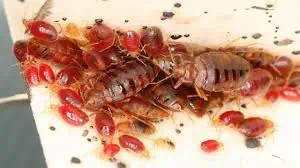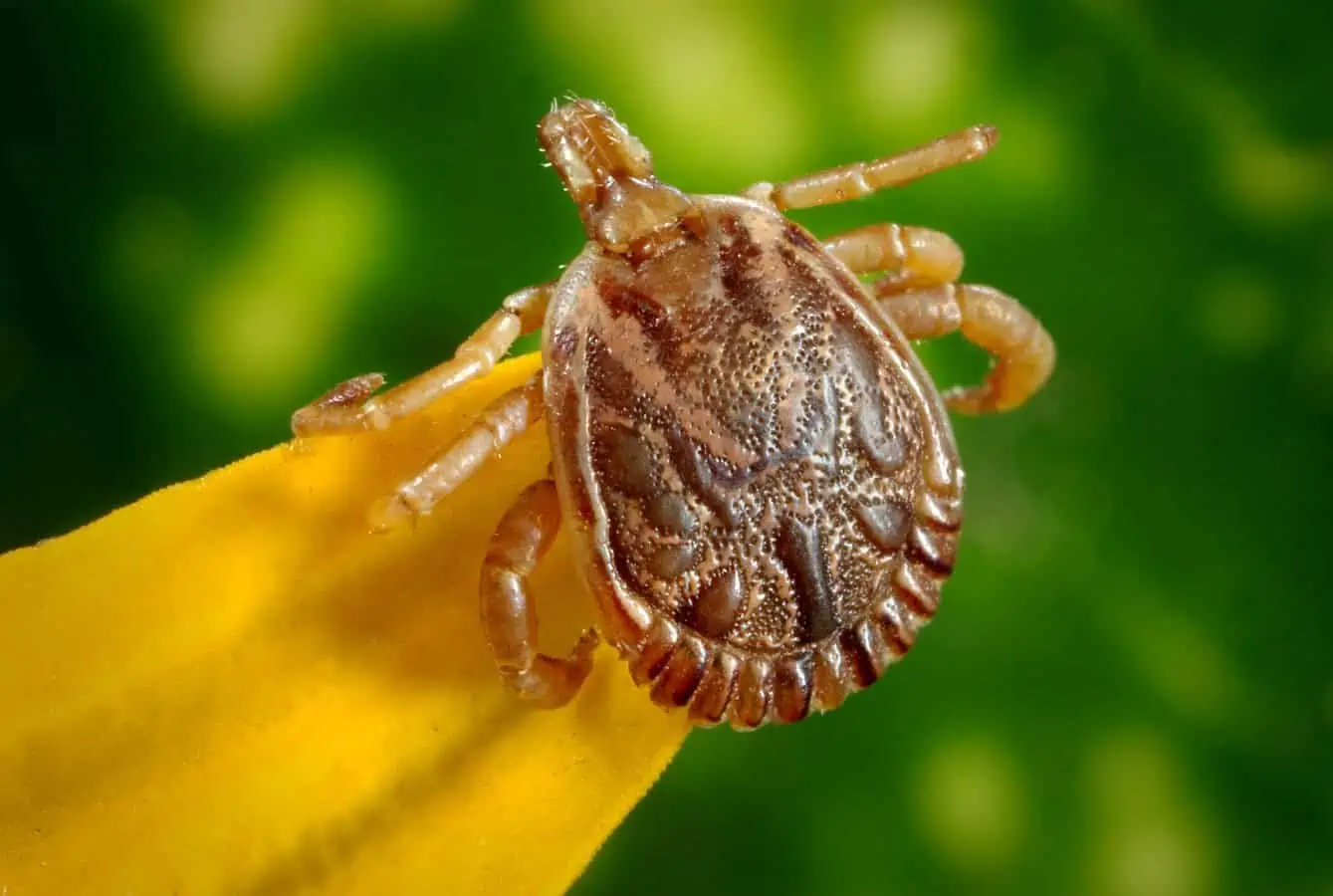Where Do Bed Bugs Come From?
Picture this: you’re peacefully sleeping in your cozy bed, when suddenly you wake up with itchy, red bites all over your body. Your mind starts racing, wondering what could have caused this discomfort. The answer might just be lurking in the shadows, hiding in your mattress, waiting to strike again. Yes, we’re talking about the notorious bed bugs.
Bed Bugs The Nightmarish Intruders
Bed bugs, those stealthy nocturnal creatures, have become a symbol of dread and anxiety. The mere thought of their presence can send shivers down your spine. But where do they come from? How do they find their way into our sanctuaries and turn our peaceful nights into battlegrounds of itchiness and frustration? Let’s embark on a journey to uncover the origins of these unwelcome guests.

The Hitchhikers of the Night: Bed Bugs Traveling Without Borders
Bed bugs are master hitchhikers. They are tiny, wingless insects that can easily hitch a ride on clothing, luggage, or other personal belongings. These resilient pests seize every opportunity to stow away, waiting patiently for a chance to infest new territories. Their ability to survive for extended periods without feeding further enhances their chances of spreading far and wide.
Hotels and Lodgings: Breeding Grounds for Infestation
One of the most common sources of bed bug infestations is hotels and lodgings. These establishments, bustling with guests from different corners of the world, provide the ideal environment for bed bugs to thrive. Travelers unknowingly bring these unwanted souvenirs back home, allowing the infestation to take root and spread throughout their living spaces.
Secondhand Furniture: A Trojan Horse of Pests
Bringing home that vintage chair or antique dresser may seem like a treasure, but it could also be a trojan horse harboring bed bugs. Used furniture, especially items with upholstery or hidden crevices, can be infested with these sneaky insects. Failing to thoroughly inspect and treat such items before introducing them into your home can lead to a full-blown infestation.
Public Transportation: The Unseen Commuters
Public transportation systems, from buses to trains, offer bed bugs an extensive network to expand their horizons. These resilient pests can crawl onto seats, hide in the crevices of upholstery, and hitch a ride from one unsuspecting passenger to another. Your daily commute could unknowingly introduce these uninvited co-passengers into your living space.

Cracks and Crevices: Gateway to Invasion
Bed bugs are skilled at finding the tiniest cracks and crevices to infiltrate our homes. They can crawl through gaps in walls, floors, or electrical outlets, seeking refuge in the cozy corners of our bedrooms. No home is completely immune to their invasion, as these pests can exploit even the smallest openings to gain access to their favorite feeding ground—us.
Taking a Stand Against the Intruders
The origin of bed bugs may be diverse, but their impact is universally unsettling. From hotels to public transportation, from used furniture to the hidden recesses of our homes, these pests find their way into our lives, disrupting our peace and leaving us sleepless and itchy. It’s crucial to stay vigilant, take preventive measures, and seek professional help if an infestation occurs. By understanding where bed bugs come from, we can fortify our defenses and reclaim our sanctuaries.
Bed Bug Eggs: The Silent Harbingers of Infestation
Imagine a hidden realm within your home, where tiny, ominous secrets lie waiting to hatch. Bed bug eggs, like tiny time bombs, possess the power to unleash a full-blown infestation upon your unsuspecting abode. Let’s understand more.
The Intricate Cycle of Life: From Egg to Nymph
Bed bugs undergo a metamorphosis, transitioning through multiple life stages. The journey begins with the hatching of eggs, which leads to the emergence of nymphs. Bed bug eggs are tiny, approximately the size of a pinhead, and have a pearly-white appearance. Their minuscule size makes them adept at hiding in the tiniest of crevices, ensuring their survival and propagation.
A Silent Invasion: The Laying of Eggs
Female bed bugs have an astonishing ability to reproduce rapidly, laying eggs at an alarming rate. A single female bed bug can lay hundreds of eggs over her lifetime. These eggs are typically laid in clusters, often hidden in cracks, crevices, or other secluded areas near their food source—us. This secretive behavior allows them to evade detection and establish a growing army of pests within our living spaces.
The Hatching Hour: A New Generation Awakens
Bed bug eggs are resilient, capable of withstanding harsh conditions and remaining dormant for extended periods. The precise duration of their incubation depends on various factors, such as temperature and humidity. However, once the optimal conditions are met, the eggs hatch, releasing hungry nymphs into the world. This emergence marks the beginning of a new generation of bloodsucking intruders.

Concealed Danger: Identifying Bed Bug Eggs
Detecting bed bug eggs can be challenging due to their small size and pale coloration. They are often mistaken for dust particles or other debris. However, upon closer inspection, bed bug eggs have a distinct oval shape and a translucent appearance. They lack the dark spot found in fecal stains, another common indicator of bed bug presence. Being able to identify these elusive eggs is crucial in taking early action against infestation.
Eradicating the Threat: Dealing with Bed Bug Eggs
To effectively combat bed bug’s infestations, addressing the eggs is paramount. Eliminating adult bed bugs alone will not suffice, as the hatching of eggs ensures the perpetuation of the problem. Professional pest control services employ a combination of treatments, including targeted insecticide applications, steam treatments, and thorough inspections to identify and eliminate both eggs and nymphs. Swift action is crucial to prevent the relentless cycle of infestation.
Conquering the Silent Harbingers
Bed bugs eggs, though small and seemingly innocuous, possess the power to unleash an infestation of epic proportions. Their stealthy nature and ability to survive under adverse conditions make them formidable adversaries. By understanding their characteristics and enlisting professional help, we can disrupt their life cycle and reclaim our homes from their silent invasion.
Bed Bugs Flea Bites on Human: When the Invisible Strikes
They come in the dead of night, stealthily crawling towards their unsuspecting prey. Bed bugs and fleas, the tiny vampires of the insect world, leave behind a trail of itchy torment on human skin.
The Bites That Haunt: Bed Bugs vs. Fleas
Bed bugs and fleas are notorious for their bites, but their methods and behavior differ. Bed bugs are primarily nocturnal creatures that feed on human blood, leaving behind clusters of red, itchy bites in a linear or zigzag pattern. Fleas, on the other hand, are agile jumpers that infest animals but can also bite humans, causing itchy, raised bumps often found on the lower legs and ankles.

Unwanted Souvenirs: Bed Bugs Bite Characteristics
Bed bugs bites are not only physically bothersome but also emotionally distressing. These bites often appear in exposed areas of the body, such as the arms, shoulders, neck, and face. They can cause intense itching, swelling, and a burning sensation, leaving visible marks that serve as a constant reminder of the unwelcome intruders lurking in our midst.
Flea Bites: The Uninvited Guests
While fleas are typically associated with pets, they can also find their way to human hosts. Flea bites are characterized by small, raised, and itchy bumps with a red halo around the center. The incessant itching can lead to scratching, which may result in secondary infections. Flea bites can be a stark reminder of the need for comprehensive pest control, not only for our beloved animals but also for our own well-being.
The Aftermath: Coping with the Effects
The aftermath of bed bug and flea bites extends beyond the physical discomfort. The incessant itching and visible marks can take a toll on our mental and emotional well-being. The constant reminder of the invisible attackers can lead to anxiety, disrupted sleep, and a sense of violation. Finding effective ways to cope with these effects is crucial in reclaiming our peace and restoring a sense of safety in our own homes.
Seeking Relief: Soothing the Itch
When faced with bed bug or flea bites, finding relief becomes a top priority. Calming the itch and reducing inflammation can be achieved through various methods. Applying over-the-counter anti-itch creams, taking antihistamines, using cold compresses, and practicing good hygiene can help alleviate the discomfort and promote healing. However, it is essential to address the underlying infestation to prevent future bites.
Breaking Free from the Itchy Shackles
Bed bug and flea bites leave more than physical marks. They leave an emotional imprint, disrupting our sense of security and invading our personal space. By understanding their characteristics and seeking professional help for comprehensive pest control, we can break free from their itchy shackles and reclaim our homes as havens of comfort and peace.
Bugs That Look Like Bed Bugs: Unmasking the Imposters
In the battle against bed bugs, it’s not just the real culprits we need to worry about. There are imposters lurking in the shadows, masquerading as bed bugs and causing unwarranted panic.
The Deceptive Mimics: Bugs That Resemble Bed Bugs
While bed bugs have a distinct appearance, there are other insects that bear a striking resemblance. These imposters can be misidentified as bed bugs, leading to unnecessary alarm and ineffective treatment. It’s important to be able to differentiate between true bed bugs and their look-alikes to avoid unnecessary anxiety.
The Carpet Beetle: A Common Intruder
One of the most common bugs mistaken for bed bugs is the carpet beetle. These small, oval-shaped insects have a varied coloration, including shades of brown, black, and white. Although they do not feed on blood like bed bugs do, carpet beetles can cause damage to fabrics, carpets, and other household items. Proper identification is crucial to implement the appropriate control measures.
Bat Bugs: Close Relatives of Bed Bugs
Another bed bug imposter is the bat bug. As the name suggests, these bugs are closely related to bed bugs and share similar characteristics. They have a similar appearance, with a flattened, oval-shaped body and a reddish-brown color. Bat bugs, however, primarily infest bats and occasionally birds, and are less commonly found in human dwellings. Proper identification and understanding their habits are essential to address any potential infestations.
Swallow Bugs: Hitchhikers of the Avian World
Swallow bugs are yet another group of insects that resemble bed bugs. They are typically found in the nests of swallows, martins, and other birds. Swallow bugs are similar in appearance to bed bugs, but they have specialized mouthparts adapted for feeding on bird blood. While they may bite humans if their preferred hosts are absent, they do not infest homes like bed bugs. Differentiating between the two is crucial to implement appropriate pest control measures.
Booklice: Tiny Intruders in Libraries
Booklice, despite their name, are not actually lice. They are small insects that infest books, papers, and other stored items. While they may resemble bed bug nymphs due to their size and pale coloration, booklice do not bite humans or feed on blood. Identifying their presence correctly can help preserve your cherished books while avoiding unnecessary concern.
Seek the Truth: Proper Identification and Control
To effectively deal with bugs that resemble bed bugs, proper identification is paramount. If you suspect an infestation, it is recommended to consult a professional pest control service for accurate identification and appropriate treatment. They have the expertise to differentiate between bed bugs and their look-alikes and implement targeted strategies to address the specific pest issue.

Unveiling the Bed Bug Imposters
In the world of pests, appearances can be deceiving. Bugs that resemble bed bugs often sow confusion and unnecessary panic. By understanding the distinguishing features of these imposters and seeking professional guidance, we can unmask the bed bug imposters and focus our efforts on effective pest control measures, ensuring peace and tranquility in our homes.
How Big Are Bed Bugs: Unveiling Their Tiny Terrors
Size doesn’t always reflect the magnitude of fear. Bed bugs, those elusive nighttime predators, prove that even the tiniest creatures can instill a sense of unease.
The Lurking Intruders: Unveiling Bed Bug Size
When it comes to bed bugs, their size can be quite surprising. Adults typically measure between 4 to 5 millimeters in length, which is roughly the size of an apple seed. Although they may seem minuscule, their impact can be far-reaching, infiltrating our homes and disrupting our peace of mind.
A Closer Look: The Anatomy of Bed Bugs
To truly understand the size of bed bugs, we must explore their anatomy. These reddish-brown creatures have flat, oval-shaped bodies, allowing them to squeeze into narrow crevices and hide within the cracks of our lives. Their tiny size, combined with their ability to remain concealed, contributes to the difficulty of eradicating them once they invade our living spaces.
Amplified Fears: The Psychological Impact
The size of bed bugs may seem insignificant, but their psychological impact can be profound. The knowledge that these tiny creatures can disrupt our sleep, leave behind itchy bites, and invade our personal space can evoke feelings of anxiety, fear, and a loss of control. The perception of their presence can loom large in our minds, even when they remain hidden from sight.
From Tiny to Terrifying: The Magnification Effect
In some instances, the size of bed bugs can feel magnified due to our heightened emotional state. Our minds play tricks on us, exaggerating their presence and making them seem larger than life. The mere thought of their microscopic existence can send shivers down our spines, amplifying our fears and intensifying our emotional response.

Confronting the Tiny Terrors: Taking Back Control
While bed bugs may be small, we are not powerless against them. By arming ourselves with knowledge, implementing thorough pest control measures, and seeking professional assistance, we can reclaim our homes and restore a sense of control. Remember, it’s not the size of the bed bugs that matters most, but our determination to overcome the challenges they present.
Fleas in Bed: A Nightmare Unleashed
Imagine crawling into your bed, seeking solace and comfort, only to be greeted by tiny, blood-sucking creatures. Fleas just like Bed Bugs can turn your sanctuary into a nightmare, inflicting itchy bites and leaving you feeling violated.
The Another Unwanted Guests: Fleas in Your Personal Haven
Beds are meant to be a place of rest and rejuvenation, but the presence of fleas shatters that illusion. These minuscule pests, notorious for their ability to jump and their insatiable appetite for blood, can turn your haven into a battleground. The realization that these pests have infiltrated your bed can evoke a deep sense of unease and violation.
The Stealthy Invaders: How Fleas Find Their Way In
Fleas just like Bed Bugs are masters of stealth, capable of hitchhiking their way into your home through various means. Pets, clothing, or even a simple walk through infested areas can unknowingly bring these unwelcome guests into your living space. Once they find their way into your bed, they establish a breeding ground, perpetuating the infestation and intensifying your emotional turmoil.
Bites of Agony: Flea Bites in Bed
Flea bites can be agonizing, both physically and emotionally. The relentless itching, the appearance of red welts on your skin, and the knowledge that these bites are the result of tiny parasites feeding on your blood can trigger feelings of frustration, anger, and distress. Sleepless nights and restless days become the norm as you battle the discomfort inflicted by fleas.
An Uphill Battle: Fighting the Flea Infestation
Dealing with fleas in your bed can feel like an uphill battle. DIY remedies may provide temporary relief, but eradicating the infestation requires a comprehensive approach. Thoroughly cleaning your bedding, vacuuming your mattress, and treating your pets are essential steps to break the flea life cycle. Seeking professional pest control assistance can ensure a more effective and long-lasting solution.
Restoring Peace: Reclaiming Your Sanctuary
Reclaiming your bed as a place of peace and tranquility is possible. By taking swift action, implementing preventive measures, and enlisting professional help, you can regain control over your sleep sanctuary. Remember, you deserve a bed free from the torment of fleas, where rest and relaxation are restored.

Do Bed Bugs Fly? Grounded by Fear
In the realm of nighttime pests, bed bugs evoke a unique sense of dread. Their ability to invade our sleeping quarters and disrupt our peace of mind is unsettling. But do bed bugs fly?
A Wingless Intruder: The Truth about Bed Bug Flight
Bed bugs, those masters of infiltration, are, fortunately, wingless creatures. They lack the ability to fly through the air with swift movements, denying them the freedom to take flight and torment us from above. Instead, they rely on other means to navigate their way into our lives.
Hitchhikers Extraordinaire: The Art of Bed Bug Travel
While bed bugs cannot fly, they possess a talent for hitchhiking that borders on the extraordinary. They latch onto our clothing, bags, or even personal belongings, taking advantage of our movements to be transported from one location to another. This allows them to infest new environments and continue their relentless pursuit of feeding on our blood.
A Stealthy Approach: Crawling in the Shadows
Bed bugs are expert crawlers, utilizing their six legs to navigate through the dark recesses of our lives. They skulk along the edges of mattresses, furniture, and walls, seeking out the perfect hiding spot to establish their presence. Their crawling prowess, coupled with their ability to remain hidden during daylight hours, makes them a formidable adversary.
Elevated Concerns: The Fear of Airborne Infestations
The absence of bed bug flight offers a small respite from worry. The fear of airborne infestations, where these pests could descend upon us from above, is unfounded. However, this does not diminish the real concerns associated with bed bug infestations, as they can still spread through human movement and infest our living spaces.
Taking Control: Prevention and Eradication
Understanding the limitations of bed bug flight empowers us to take control of our environment. By implementing preventive measures such as regular inspections, maintaining cleanliness, and being vigilant when traveling, we can reduce the risk of bed bug infestations. In the unfortunate event of an infestation, seeking professional help is crucial for effective eradication.
Flea Dirt: The Unsettling Evidence
Flea dirt, also known as flea feces, is another telltale sign of a flea infestation in your bed. It appears as tiny, dark specks on your bedding, resembling ground pepper. The sight of these unsettling remnants confirms the presence of fleas, further fueling your emotional turmoil and the urgency to take action.
Active Fleas: Intruders in Plain Sight
If you’re unlucky enough to spot active fleas crawling on your bedding, it’s a clear indication of a significant infestation. Witnessing these tiny parasites scurrying around, feasting on your blood, can trigger a mixture of revulsion, anger, and anxiety. The sight of them in plain sight amplifies the emotional impact of the invasion.
Restoring Serenity: Taking Control
Restoring serenity to your bed requires taking control of the situation. If you notice any of the aforementioned signs, it is crucial to act promptly. Thoroughly clean your bedding, vacuum your mattress, and wash affected items in hot water to eliminate fleas and their eggs. Seeking professional pest control assistance can provide a more effective solution and peace of mind.

Tick vs. Bed Bug: Unwanted Intruders in a Battle for Peace
When it comes to unwanted intruders in our living spaces, ticks and bed bugs are two notorious culprits that can cause emotional distress and disrupt our peace of mind. Understanding the differences between these pests is essential for identifying and addressing the challenges they present.
Tick Terrors: A Menace in Nature’s Realm
Ticks are commonly associated with outdoor environments, lurking in grassy areas, forests, and even our own backyards. Their presence can evoke a range of emotions, from fear and anxiety to a sense of vulnerability. The thought of these bloodsucking parasites attaching themselves to our bodies, potentially transmitting diseases, instills a deep emotional unease.
Bed Bug Blues: Invaders of Our Personal Sanctuaries
Unlike ticks, bed bugs infiltrate the very places where we seek solace and rest, such as our homes and hotels. The emotional impact of discovering bed bugs in our personal sanctuaries is profound. Feelings of violation, disgust, and a loss of security can quickly take hold. The thought of these nocturnal creatures feasting on our blood while we sleep can cause immense emotional turmoil.
Size and Appearance: A Tale of Contrasts
Ticks and bed bugs differ significantly in their size and appearance. Ticks are typically larger, ranging from a few millimeters to a centimeter in length, depending on the species. They have a round or oval-shaped body and are often dark brown or black. In contrast, bed bugs are smaller, with adults measuring around 4 to 5 millimeters in length. They have a flat, oval-shaped body and are reddish-brown in color.
Feeding Habits: Quest for Blood
Both ticks and bed bugs are hematophagous, meaning they feed on the blood of animals or humans. However, their feeding habits differ. Ticks attach themselves to a host and feed for extended periods, often unnoticed. In contrast, bed bugs typically feed for shorter durations, usually during the night while their hosts are asleep. The emotional impact of being aware that these pests rely on our blood for survival can evoke feelings of disgust and violation.
Disease Transmission: A Hidden Danger
One of the significant concerns associated with ticks is their ability to transmit diseases such as Lyme disease, Rocky Mountain spotted fever, and tick-borne encephalitis. The emotional toll of knowing that a tick bite could lead to serious health complications can be overwhelming. On the other hand, bed bugs are not known to transmit diseases, but their bites can still cause itching, discomfort, and secondary skin infections.
Defense Strategies: Battling the Unwanted
When it comes to dealing with ticks and bed bugs, different defense strategies are necessary. Protecting oneself from ticks involves wearing protective clothing, using repellents, and conducting thorough checks after spending time in tick-prone areas. In the case of bed bugs, proactive measures such as regular inspections, maintaining cleanliness, and seeking professional help are vital for prevention and control. Taking action against these pests empowers us to regain a sense of safety and regain our emotional well-being.

Bed Bug Larvae: The Unseen Threat Growing in Darkness
When we think of bed bugs, it’s often the adult pests that come to mind—the ones that invade our beds and disrupt our sleep. However, the journey of a bed bug begins long before it reaches adulthood. The emotional impact of discovering the presence of bed bug larvae in our living spaces can be both unsettling and distressing.
Innocence Shattered: The Emergence of Bed Bug Larvae
The discovery of bed bug larvae can shatter our sense of peace and innocence. These tiny, translucent creatures, often no larger than a grain of rice, represent the early stages of an infestation. The emotional turmoil of realizing that our living spaces are being invaded by these minuscule, wriggling beings can evoke feelings of disgust, frustration, and a loss of control.
Hidden Nests: The Dark Secrets of Bed Bug Larvae
Bed bug larvae seek shelter and security in hidden nests, often in crevices, cracks, or seams near their feeding sources. The emotional distress of knowing that these seemingly harmless locations can harbor the unseen threat of growing bed bug populations is disconcerting. It’s a constant reminder that these pests are multiplying and thriving in the darkness of our living spaces.
Eerie Molting: The Transformative Process
As bed bug larvae grow, they undergo several molting stages, shedding their exoskeletons to accommodate their increasing size. Witnessing the discarded exoskeletons left behind during this eerie process can intensify our emotional unease. It serves as a reminder that these pests are continuously developing and progressing towards adulthood, fueling our desire to eliminate them from our lives.
Voracious Appetites: Feeding and Nurturing
Like their adult counterparts, bed bug larvae feed on blood to sustain their growth and development. The realization that these seemingly innocent creatures depend on our blood for nourishment can evoke feelings of intrusion and violation. It’s a stark reminder that our well-being is being compromised, and our spaces are being invaded by these tiny, insatiable pests.
Hope in Control: Taking Action Against Bed Bug Larvae
While the presence of bed bug larvae can be emotionally challenging, there is hope in taking action. By being proactive and implementing effective pest control measures, we can regain a sense of control over our living spaces and protect our emotional well-being. Seeking professional assistance, thorough inspections, and implementing targeted treatment strategies can pave the way for a bed bug-free environment.
Bed Worms: Unwelcome Intruders That Send Shivers Down Your Spine
In the realm of household pests, there are few things as unsettling as the discovery of bed worms. These creepy crawlers, often referred to as carpet beetle larvae, can infest our living spaces and evoke a range of emotions from disgust to fear. In this article, we explore the emotional impact of encountering bed worms and shed light on their behavior, identification, and the measures we can take to reclaim our homes.
A Surprise Invasion: The Uninvited Guests in Your Bed
The sudden realization that bed worms have invaded our personal sanctuary is enough to send shivers down our spines. These small, worm-like larvae may be found in the fibers of our mattresses, carpets, or upholstery, and their presence disrupts our sense of cleanliness and comfort. The emotional response to these unwelcome guests often includes revulsion, anxiety, and a desperate need to eliminate them.
Silent Destroyers: The Damage of Bed Worms
Bed worms may be small, but their appetite for destruction is immense. These voracious larvae feed on natural fibers, such as wool, silk, and even feathers, leading to damage in carpets, clothing, and other household items. The emotional toll of witnessing the destruction caused by these pests can evoke feelings of frustration, helplessness, and a sense of violation. It’s a reminder that our cherished possessions are under attack.
Identification Challenges: Unveiling the Bed Worms
Identifying bed worms can be a perplexing task. They are often mistaken for other pests or go unnoticed until the damage becomes apparent. The emotional rollercoaster of uncertainty and confusion adds to the distress of dealing with these pests. It emphasizes the need for awareness and knowledge to properly identify and address the infestation.

Conclusion
Reclaiming our homes from the clutches of bed bugs requires a proactive approach. Regular cleaning, vacuuming, and steam-cleaning can help eliminate eggs, larvae, and adult insects. You can keep your calendar block or a reminder set for timely cleanliness of your dream home. Ensure proper storage of clothing and fabrics especially avoid keeping any damp cloth packed or check dampness in the area and along with effective and timely pest control measures, can prevent future infestations. Happy Bugging!!
Frequently Asked Questions (FAQ’s)
1. What is the main cause of bed bugs?
The main cause of bed bugs is usually infestations from nearby sources. They can be introduced into a space through infested furniture, luggage, or clothing. Bed bugs are skilled hitchhikers and can easily move from one location to another, leading to the spread of infestations.
2. What instantly kills bed bugs?
Heat, specifically high temperatures above 113°F (45°C), can instantly kill bed bugs. Exposing them to such heat through methods like steam treatment or hot washing and drying of infested items can effectively eradicate these pests, providing a swift and efficient solution to the bed bug menace.
3. How do I know if we have bed bugs?
To identify the presence of bed bugs, keep an eye out for signs such as small reddish-brown stains on bedding, tiny dark spots (fecal matter) on mattresses or furniture, and a sweet musty odor. Additionally, look for itchy bites in clusters on the skin. Professional pest inspection can confirm infestation suspicions.
4. How do you get rid of bed bugs permanently?
To achieve permanent eradication of bed bugs, a multifaceted approach is necessary. Start by thoroughly cleaning and vacuuming infested areas, then wash and dry infested bedding on high heat. Use insecticides specifically designed for bed bugs, seal cracks, and crevices, and consider professional pest control services for comprehensive treatment and long-term prevention.
5. How to get rid of bed bugs in one day?
Eliminating bed bugs entirely in a single day is challenging but feasible. Begin by decluttering the area and laundering infested bedding on high heat. Vacuum meticulously, focusing on cracks and seams. Use a targeted insecticide, such as those containing pyrethroids, following the product instructions. Consider seeking professional assistance for more efficient results.
6. How to find bed bugs during the day?
To spot bed bugs during the day, conduct a thorough inspection of your surroundings. Examine mattress seams, crevices, and cracks in furniture. Look for live bugs, shed exoskeletons, or tiny dark stains on bedding or upholstery. Use a flashlight to illuminate hidden areas and pay attention to their distinct musty odor.
7. What causes bed bugs to die?
Bed bugs can die due to various factors. Exposure to high temperatures above 113°F (45°C) kills them by denaturing their proteins. Insecticides formulated specifically for bed bugs can also cause their demise. Additionally, starvation over an extended period or the absence of a suitable host can lead to their eventual death.
8. How to get rid of bed bugs in a mattress?
To eliminate bed bugs from a mattress, start by vacuuming it thoroughly on all sides. Encase the mattress in a bed bug-proof cover to trap any remaining bugs inside. Apply a residual insecticide to the seams and edges. Consider using steam treatment or hiring professional pest control for effective mattress treatment and prevention.





